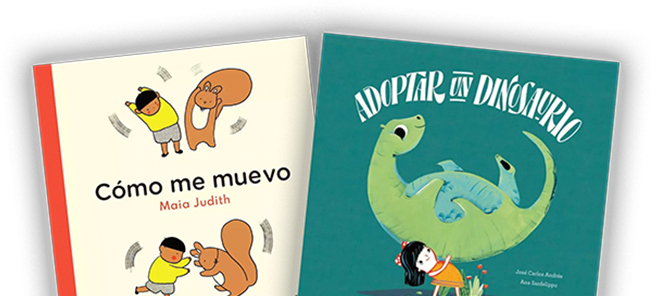
Discovering a new language is full of wonder. Every time you learn a new word, it’s like finding a piece to a puzzle. And if you connect that language to things your child already loves, you can more easily share in the excitement and joy.
Here are our top suggestions for teaching Spanish as a second language to your little ones.
Build a Library of Awesome Spanish Children’s Books
Perhaps unsurprisingly, this is our priority #1, by far. Reading books helps kids develop literacy and fluency together through creative storytelling. They get to relax and enjoy beautiful illustrations, unique characters, and exciting or relatable plotlines as their vocabularies grow.
Even if you don’t speak Spanish yourself, you can find read-alongs on Youtube for many popular titles. This allows your Spanish student to improve their listening and pronunciation as well.
For young children and early learners, it’s a good idea to begin with a small collection of picture books and shorter stories. These help them learn the most basic Spanish words and verbs, which makes it easier for them to understand longer books later.
Watch Their Favorite Movies and TV Shows en español
The great thing about streaming is that there is almost always an option to select the Spanish language version of whatever you’re watching. This can help kids learn new words in a fun, exciting way, while still enjoying their favorite characters and stories.
To make learning easier, you can let them rewatch beloved episodes and films in Spanish. Since they can probably already quote plenty of scenes by heart, it will be easier for them to understand the translation. The enhanced comprehension also boosts their confidence.
If your family doesn’t watch a lot of television or movies, that’s okay! Consider choosing one new movie a week that you can all enjoy together. It’s okay to select English subtitles to play along with the Spanish audio as well.

Dance and Sing Along With Spanish Songs
Music is a universal language, so no matter how new to Spanish your child is, they’ll instantly connect with fun songs that make them want to get up and dance. There are plenty of great Spanish kids songs online that teach basic words and phrases.
You’ll likely find yourself humming these tunes to yourself throughout the day. Canticos and Super Simple Español are two great channels filled with Spanish songs for the littlest learners. They upload videos regularly, too, so you’ll never run out of new tunes.
Speak Spanish Together
You don’t have to be fluent yourself (or even speak much at all!) to practice Spanish with your child. Watching their parents break the ice can encourage apprehensive learners to try their hand at speaking as well.
It’s easy for you to learn colors, numbers, and common food names in Spanish. With just a little bit of studying, you can have a good basic vocabulary that nurture your child’s own language learning.
A little bit of language exposure goes a long way. Kids are more likely to remember words that are used in everyday contexts than those limited to worksheets or textbooks. The goal is to make Spanish feel natural to them early, so they become comfortable speaking it in any situation.
Play Games Together
There are plenty of educational games that you and your child can play in Spanish. Word Toss is a great beginner Spanish game that helps kids learn words from a variety of categories. Using English-to-Spanish or Spanish-to-English cues, they have to click different balloons and pop the one that matches the word they’ve been given.
PBS Kids also has a wide selection of free Spanish kids games that feature characters like Curious George and the Cat in the Hat.
Off screen, why not make a fun game of Spanish kids bingo or Lotería? Write some words your child is learning on a sheet of paper, and call them out as you play. Mix it up from time to time, offering a combination of familiar and new words to keep their memory and recall sharp.
You can also up the challenge by calling out the word in English, then having them place their chips on the corresponding Spanish word on their sheet.
Final Tips for Raising Second-Language Spanish Speakers
Despite your best efforts, there will of course be many times that your child wants to speak English over Spanish. Don’t force them to speak when they really aren’t ready; instead, acknowledge reluctance, but meet it with immersion in another form.
If your child doesn’t show a lot of enthusiasm to speak, they can listen instead. As Spanish becomes more familiar to them, they’ll likely feel less shy or embarrassed to use it themselves.
Another suggestion is to always choose topics that your child loves when introducing Spanish at home. Kids will naturally be more excited about something they care about. Luckily, it’s easy to find plenty of Spanish books and kid-friendly YouTube videos on virtually every topic imaginable.
Finally, remember to always praise any efforts they make to communicate in Spanish. Don’t worry about correcting them in the beginning. Instead, show them how great it is to speak their second language, and how fun it can be using it in their lives. Over time, they will want to use the new words they learn to communicate with you.
To bring the language home, you can also order some Spanish children’s books from Sol Book Box. Our curated collections offer exciting new Spanish and bilingual stories delivered to your door each month.




